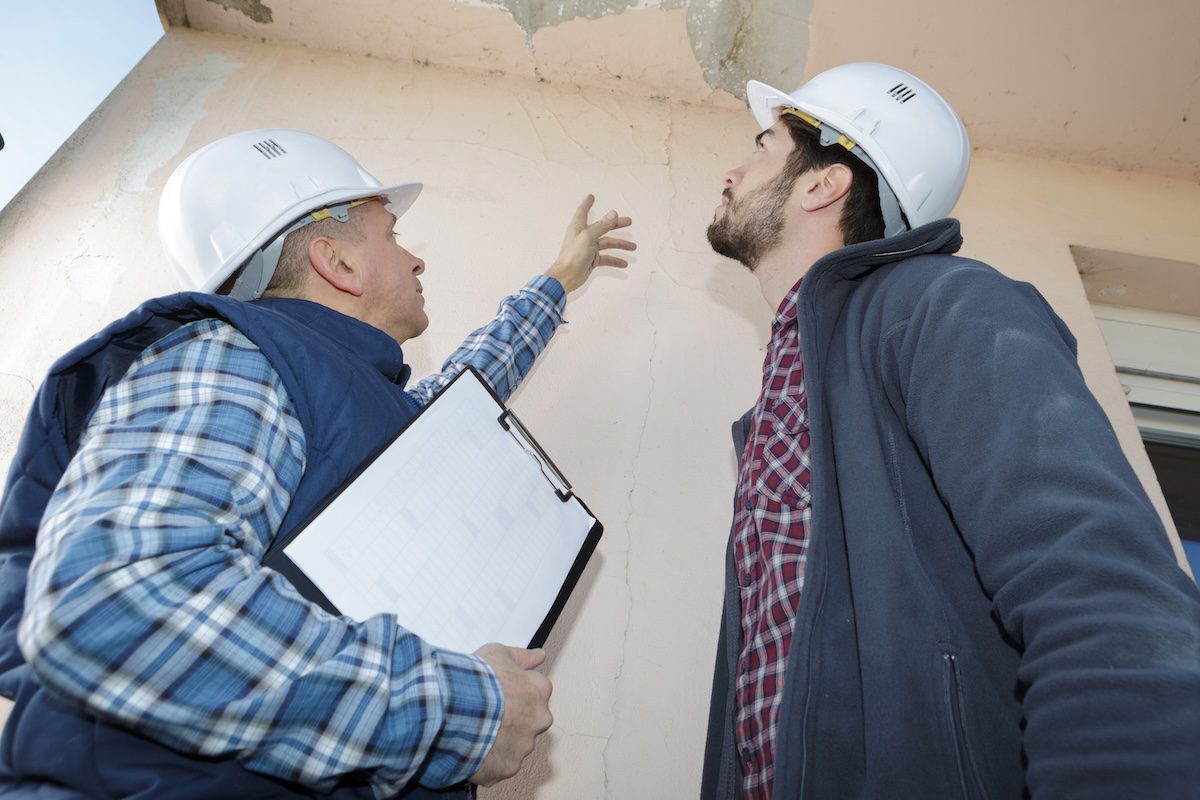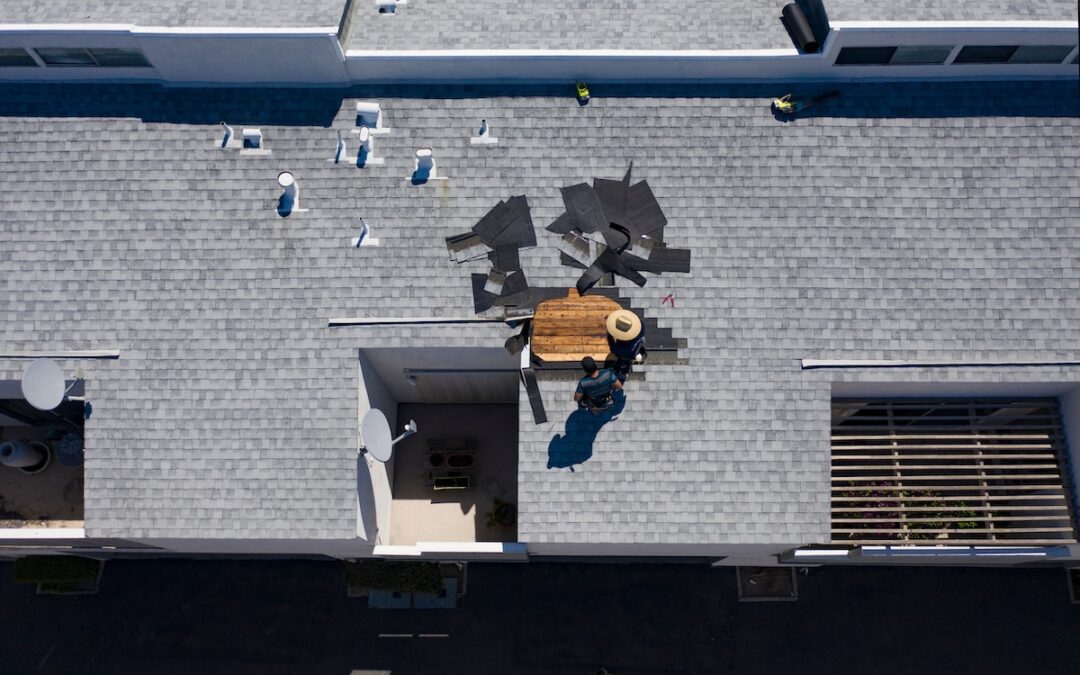A leaking roof is every homeowner’s nightmare, but finding the source of the problem doesn’t have to be overwhelming. Spotting the damage early can save you from costly repairs and keep your home protected. This guide will walk you through how to find a roof leak and what steps to take once you’ve identified the problem.
Here’s what we’ll cover:
- Signs to watch for that indicate a roof leak
- Step-by-step tips to detect and manage a roof leak
- Common culprits behind roof leaks and how to address them
⚠️ Spotting the Signs of a Roof Leak

Before climbing up to your roof or poking around your attic, it helps to understand the common signs of a roof leak. Keep an eye out for:
- Water stains on ceilings or walls: Discolored spots or streaks could indicate water is seeping in.
- Dripping water in your attic or on upper floors during rain.
- Peeling paint or warped drywall caused by moisture buildup.
- Mold or mildew growth, especially on ceilings or walls near gutters.
- Missing or damaged shingles visible from your yard or driveway.
- Granules in the gutter, signaling shingle wear and tear.
🔎 6 Ways to Detect and Manage a Roof Leak

Finding the exact source of a roof leak can feel like searching for a needle in a haystack. But with these steps, you can narrow it down and take control of the situation.
1. Start in the Attic
Begin your inspection in the attic during daylight hours. Use a flashlight to carefully examine the space for any signs of water damage. Look for water stains, moist wood, or sunlight streaming through cracks in the roof. If you notice any water trails, trace them upward to help identify the starting point of the leak. Pay close attention to areas around roof joints, vents, and chimneys as these are common weak spots.
2. Check Your Roof from the Outside
Move outside and inspect your roof carefully. Start from the ground using binoculars to get a close look without putting yourself at risk. If you’re comfortable and it’s safe, climb onto the roof for a closer inspection. Look for common signs of damage, such as cracked, curled, or missing shingles. Pay attention to rusted or damaged flashing around chimneys, skylights, and vents, as these can allow water to seep in. Blocked or sagging gutters should also be noted, as they can cause water to pool and leak into your home.
3. Perform a Water Test (with Help)
If you’re still unable to locate the source of the roof leak, perform a water test. This requires two people: one person stays inside the house to monitor for any signs of dripping water, while the other uses a garden hose to spray water onto small sections of the roof at a time. Work in a methodical pattern, moving slowly, so you can pinpoint the exact location of the leak. Be patient, as it may take some time before water becomes visible inside.
4. Examine Roof Joints and Materials
Focus your attention on roof joints and areas where materials meet, as these are often the most vulnerable spots for leaks. Common areas to inspect include where different roof sections meet and where the roof connects to chimneys, vent pipes, or skylights. Look closely for any signs of wear and tear, such as gaps, cracks, or loose materials, as these could allow water to enter your home.
5. Inspect Seals and Skylights
Improper sealing is a frequent cause of roof leaks, especially around skylights, vents, and chimneys. Carefully check the seals in these areas to ensure they’re intact and not deteriorating. Look for cracks, gaps, or signs of aging in the sealant. If you notice any issues, resealing or repairing these areas promptly can prevent further water intrusion.
6. Inspect Gutters and Downspouts
Finally, take a look at your gutters and downspouts. Clogged or sagging gutters can cause water to back up and seep under your shingles, leading to leaks. Clear out any debris, such as leaves or dirt, and ensure the gutters are securely attached and properly sloped to direct water away from your home. Check that downspouts are clear and functioning so that water flows freely and doesn’t pool near your foundation. Proper gutter maintenance is essential for preventing roof leaks and water damage.
👉 Common Causes of Roof Leaks and Fixes

Understanding what’s causing your roof leak is half the battle. Here are a few common culprits:
Aging Roof Material
Roofing materials, no matter how high-quality, naturally deteriorate over time. Shingles can crack, curl, or lose granules, and seals can weaken, leaving your roof more susceptible to leaks and damage. If your roof is over 20 years old, it’s a good idea to have it inspected. Even if it doesn’t show visible damage, the underlying materials may be at the end of their lifespan. Replacing an old roof proactively can save you from costly repairs down the line.
Storm Damage
Severe weather, such as hailstorms, strong winds, or heavy rain, can wreak havoc on your roof. Hail can leave dents and cracks, winds can rip off shingles, and falling branches can puncture or break roof materials. After any major storm, it’s crucial to inspect your roof for damage. Small issues, if left unaddressed, can turn into much larger problems. If you’re unsure what to look for, calling a professional for a thorough assessment is always a smart move.
Clogged Gutters
Your roof and gutters work hand-in-hand to protect your home. When gutters become clogged with leaves, debris, or dirt, water can overflow and pool on your roof. This standing water often seeps under shingles and into your home, potentially causing leaks and structural damage. Regular gutter cleaning and maintenance help ensure proper drainage and keep water away from your roof and foundation.
Improper Installation
Even the best roofing materials can fail if they’re not installed correctly. Poor workmanship during roof installation can lead to a range of issues, including leaks, uneven shingle alignment, and premature wear. To avoid these problems, it’s essential to hire a trusted, certified roofing contractor with a proven track record. A properly installed roof not only provides protection but also peace of mind for years to come.
Flashing Issues
Flashing is a critical component of your roof, designed to seal and protect vulnerable areas like roof joints, chimneys, and skylights. Over time, flashing can corrode, crack, or become dislodged, allowing water to penetrate your roof. Improper installation or low-quality materials can also lead to flashing problems. Replacing or repairing damaged flashing is often a simple fix that can prevent leaks and water damage. Regularly inspecting these areas can help you catch issues early.
💧 Roof Leak Detection
Finding a roof leak can be tricky, but ensuring it’s repaired correctly requires a trusted professional. That’s where Great State Roofing comes in. With our experienced team, free inspections, and commitment to using high-quality materials, we’re dedicated to providing reliable, long-lasting solutions for your roofing needs.
Let us take the stress out of roof repairs—contact Great State Roofing today to schedule your free inspection and see why so many homeowners trust us to protect their homes!

